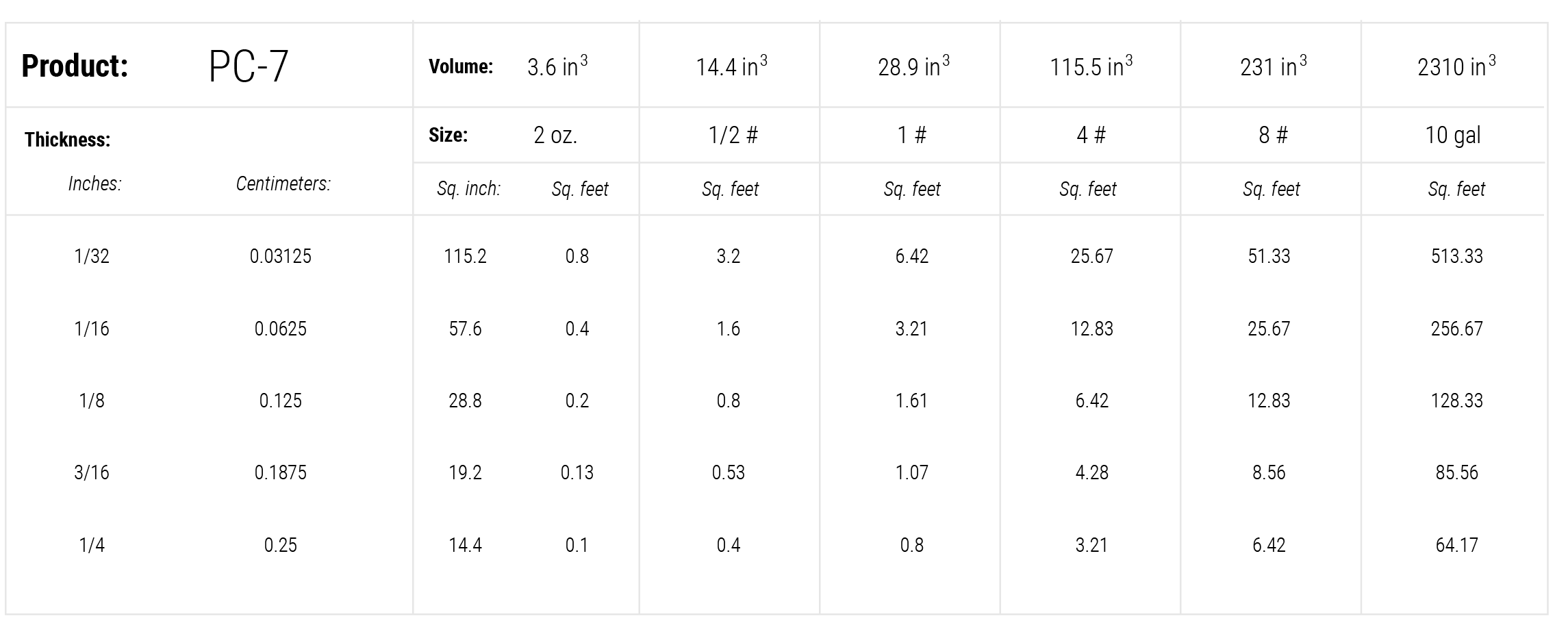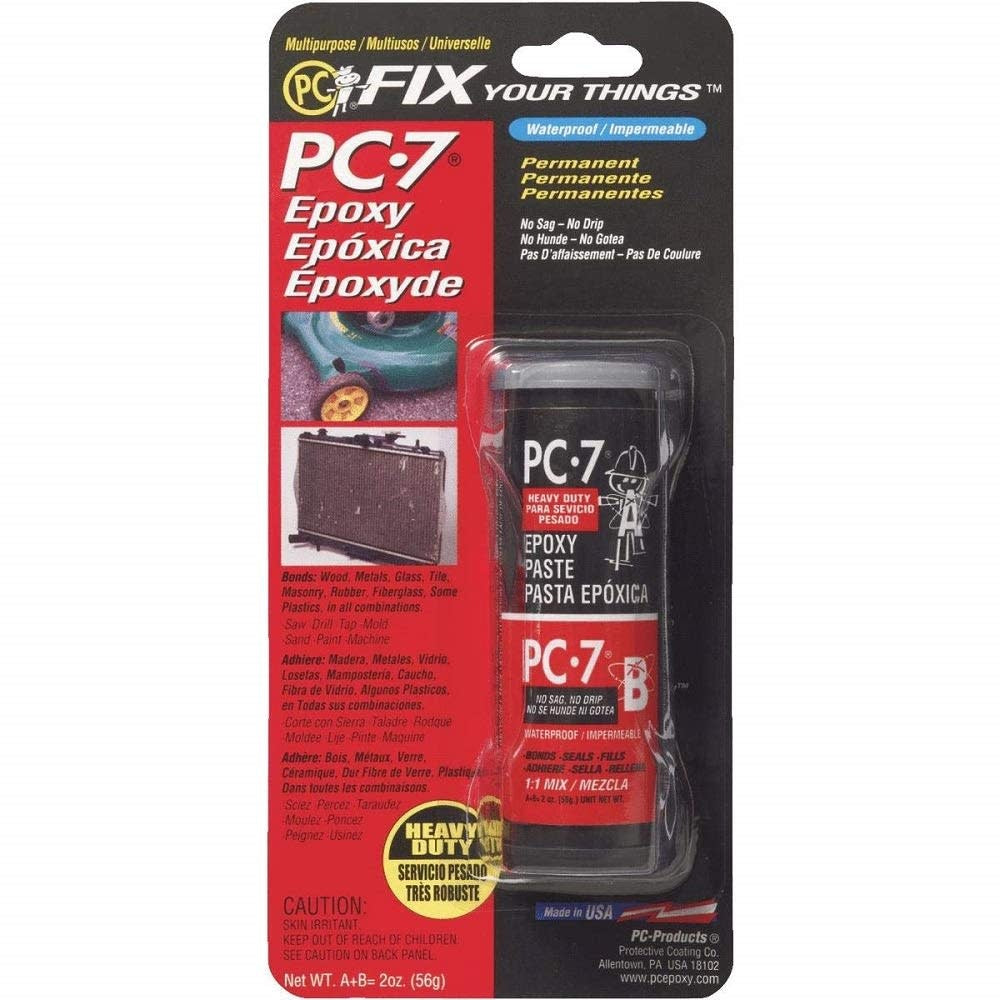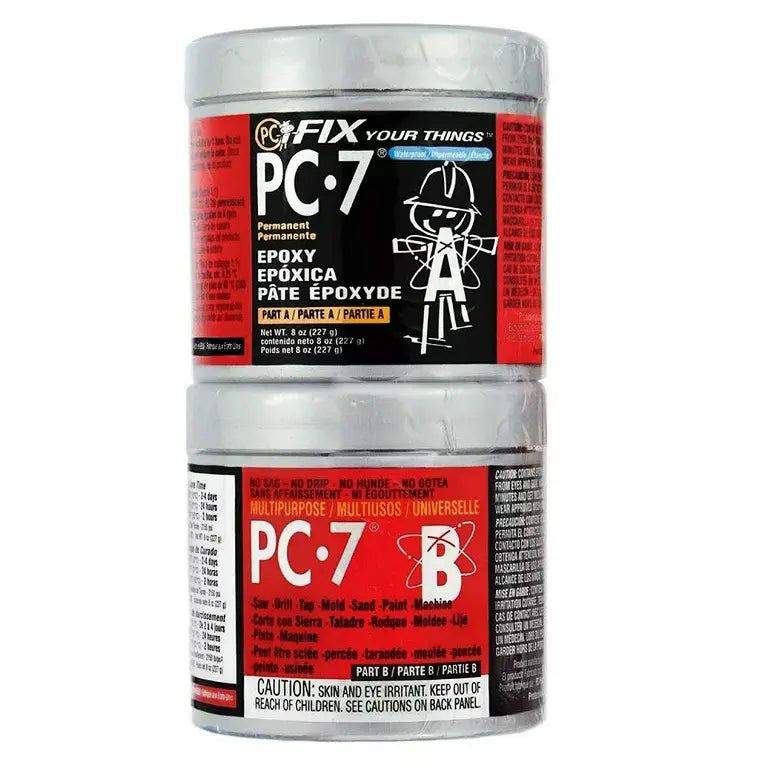PC-7® is the original tough job epoxy! This paste epoxy was originally formulated more than 60 years ago for the maximum in bonding power. Professionals to the do-it-yourselfers select PC-7® because of its exceptional adhesion to metals, ceramics, masonry and many plastics. PC-7® is designed for permanent repairs. Where other adhesives fail…PC-7® won’t! Choose PC-7® if you want to: seal a crack in a wall, attach a hanger to a ceramic plaque, seal a leak in an oil pan, repair a granite monument, fix a leak in PVC pipe connection, create a multimedia sculpture, and thousands of other repairs. When mixed, part A (gray) and the hardener part B (black) react to form a bond of tremendous strength. The PC-7® formulation is slow curing, but slow can be a good thing especially for large tasks.
Protective Coating Company
PC-7® Paste Epoxy
PC-7® Paste Epoxy
Low stock: 2 left
Couldn't load pickup availability
PC-7® is thick. Thick is good if you need to work vertically or want to hold an object in place. How thick? Thicker than peanut butter but not as thick as bubble gum.
When mixing equal parts “A” and “B” we generally recommend eyeballing the amounts but if more precise measurements are desired, based on an average net weight for each size unit we have:
PC-7 116 grams A to 100 grams B
Here are just a few specific uses (there are hundreds of other uses):

- Bond metal electrical boxes to concrete wall.
- Fill cracks in basement walls.
- Rebuild vintage Bakelite steering wheels.
- Seal holes in oil and transmission pans or fuel tank.
- Bond and repair stainless steel.
- Attach transition strips on concrete floor.
- Attach firing strips to concrete wall.
- Bond to and rebuild hard rubber bumper.
How to prepare a surface for bonding with PC-7 Epoxy Paste
Remove contaminants such as dust, dirt, oil and grime with solvents such as Denatured Alcohol, Acetone, Rubbing Alcohol (isopropyl alcohol) or Lacquer Thinner. Mild detergent solution in water is also good removing contaminants. Use a clean paper towel or rag for wiping. Do not use Mineral Spirits or Paint Thinner for removing contaminants.
Remove rust and loose paint with sandpaper or wire brush. Epoxy typically sticks to most paints. If there is a concern of the paint’s adhesion then remove it with sandpaper or wire brush.
Smooth, glossy and shiny surfaces should be scuffed using sandpaper to increase adhesion.
How to clean-up after PC-7 Epoxy Paste application
Use Denatured Alcohol, Acetone, Rubbing Alcohol (isopropyl alcohol) or Lacquer Thinner to clean tools and mixing surface before PC-7® cures.
Clean hands and skin with soap and water.
Cured epoxy can be removed by applying Paint Remover or Paint Stripper to soften the epoxy surface. Scratch off the softened epoxy. Repeat as needed.
Share


- Choosing a selection results in a full page refresh.
- Opens in a new window.

